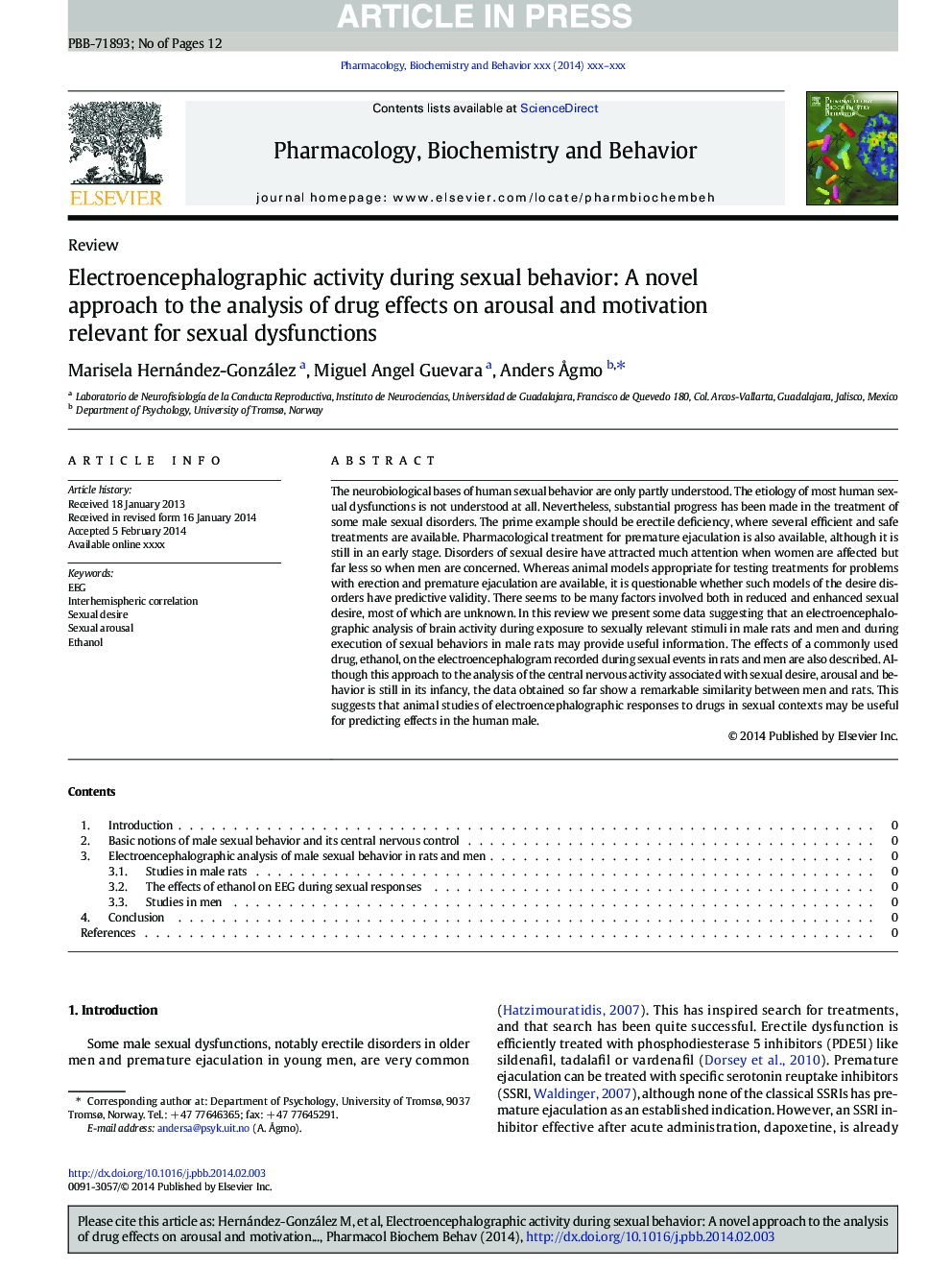| Article ID | Journal | Published Year | Pages | File Type |
|---|---|---|---|---|
| 2012852 | Pharmacology Biochemistry and Behavior | 2014 | 12 Pages |
Abstract
The neurobiological bases of human sexual behavior are only partly understood. The etiology of most human sexual dysfunctions is not understood at all. Nevertheless, substantial progress has been made in the treatment of some male sexual disorders. The prime example should be erectile deficiency, where several efficient and safe treatments are available. Pharmacological treatment for premature ejaculation is also available, although it is still in an early stage. Disorders of sexual desire have attracted much attention when women are affected but far less so when men are concerned. Whereas animal models appropriate for testing treatments for problems with erection and premature ejaculation are available, it is questionable whether such models of the desire disorders have predictive validity. There seems to be many factors involved both in reduced and enhanced sexual desire, most of which are unknown. In this review we present some data suggesting that an electroencephalographic analysis of brain activity during exposure to sexually relevant stimuli in male rats and men and during execution of sexual behaviors in male rats may provide useful information. The effects of a commonly used drug, ethanol, on the electroencephalogram recorded during sexual events in rats and men are also described. Although this approach to the analysis of the central nervous activity associated with sexual desire, arousal and behavior is still in its infancy, the data obtained so far show a remarkable similarity between men and rats. This suggests that animal studies of electroencephalographic responses to drugs in sexual contexts may be useful for predicting effects in the human male.
Related Topics
Life Sciences
Biochemistry, Genetics and Molecular Biology
Biochemistry
Authors
Marisela Hernández-González, Miguel Angel Guevara, Anders Ã
gmo,
